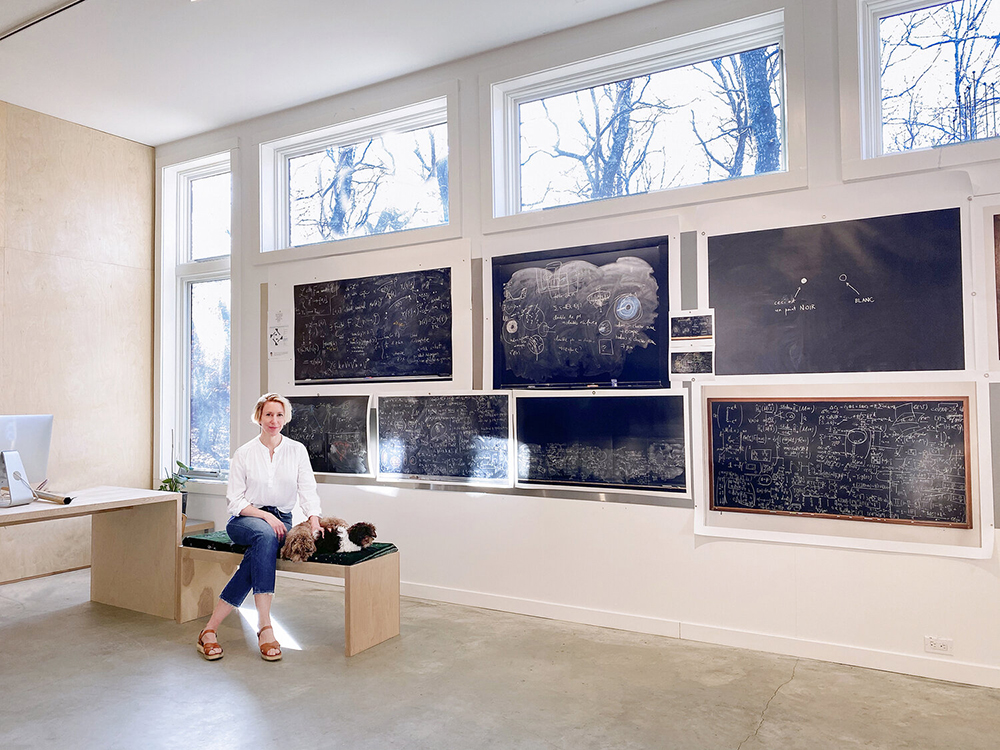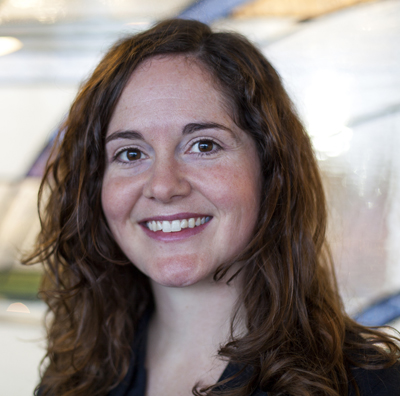The artistry of mathematical models

To an engineer, a chalkboard is a tool for sharing ideas and brainstorming solutions to new and complex problems. Prof. Laura Balzano, for example, takes to the chalkboard to work through complex problems and brainstorm solutions with colleagues. But to Jessica Wynne, a professor of photography at the Fashion Institute of Technology, that same chalkboard is an artistic expression of human thought and ingenuity.
“When I’m looking at a chalkboard filled with math, I have the same sort of experience as when I’m looking at a great abstract painting,” Wynne said. “You feel the intensity of what’s shown on the board, but you can’t access the meaning. I really like that tension of being pulled in and pushed away at the same time.”
When I’m looking at a chalkboard filled with math, I have the same sort of experience as when I’m looking at a great abstract painting.
Prof. Jessica Wynne
Wynne first became interested in chalkboards during a trip to northern India with her students. While visiting an elementary school, Wynne was struck by the wonder and resonance of a series of chalkboards covered in Hindi. When she returned, she began documenting the chalkboards of engineers and mathematicians as a way to showcase the beauty and the creativity of problem solving.
“It’s about exploring ideas, building on things that have come before, to further knowledge and find truths in the world,” Wynne said. “There’s this rich internal universe that exists only in a creator’s head – whether musician, or poet, or mathematician – and I wanted to know what’s going on there.”

Wynne encountered one of Balzano’s chalkboards during their mutual stay at the Institute for Advanced Study, a place dedicated to liberating scholarly creativity.
Balzano was exploring new approaches to modeling big data, specifically highly incomplete or corrupted data, uncalibrated data, and heterogeneous data. Her research focuses on the applications of such big, messy data in networks, environmental monitoring, and computer vision, which means much of her board is covered in complex mathematical equations that grapple with abstract theory and experimentation. This made her a perfect match for Wynne’s project.
“The thing I love about Laura’s board is that it really shows the evolution of thought,” Wynne said. “The nature of chalkboards is that they’re ephemeral. You’re writing this story, erasing it, and going over and over it again, creating these different layers. You can see the passage of time.”
When Wynne came to document Balzano’s board, it already featured sketches from three different collaborative projects in machine learning. At the time, Balzano was meeting with a former student, Amanda Bower, and a colleague from UT-Austin, Adam Klivans, after she gave a seminar at the Institute.

The right side of the board contains Klivans’ sketches related to Balzano’s talk. The bottom-right part of the board was drawn by Balzano to demonstrate to Klivans what her team has been doing in their research and what motivated them. Much of the rest of the right board is now published.
“In general, ideas are hard to articulate, but that’s the amazing part of math – it’s a universal language,” Balzano said. “We’re able to come to a common understanding, and think about what we don’t yet understand, and where we could go with it together.”
The last section of the board, the lower left, was drawn by Balzano’s young daughter, aged two and half at the time. Despite its origins, it was just as compelling and meaningful to Wynne as the rest.
“I’m very interested in children’s art, for there’s so much freedom and exploration,” Wynne said. “To me, seeing it beside Laura’s equations really showed the experience of being a working mom. You know, bringing your child to work at the office, having them experience that with you. I thought it was really beautiful.”
Balzano’s blackboard became one of the featured pieces in Wynne’s photography series, “Do Not Erase,” and it serves as the cover image for Wynne’s book. Both were featured recently in Scientific American.

 MENU
MENU 
